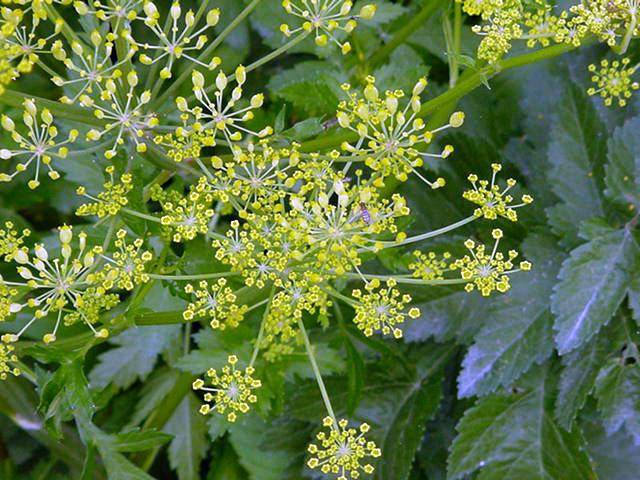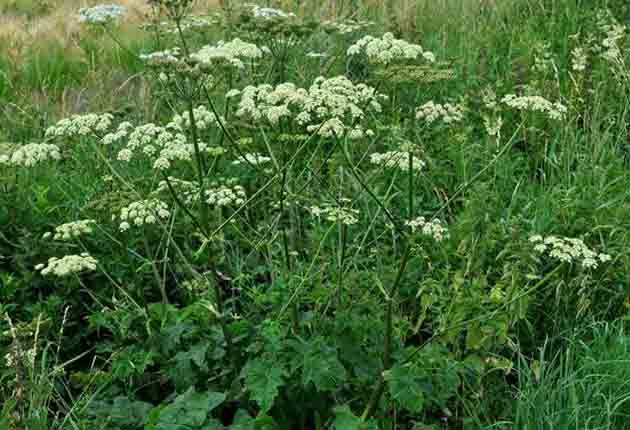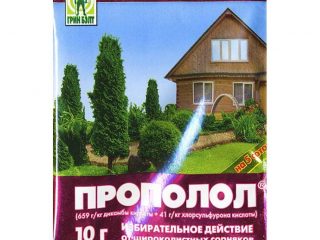Content
There are many plant species in the wild. Some of them are used by humans for food or to feed livestock. Another group of plants is called weeds. Among them there are varieties that are dangerous and harmless to humans. A plant such as hogweed has been known to people since ancient times. It was even grown on a plantation.
Unfortunately, in recent years, hogweed has become a nasty weed. But this is not even the worst thing; the fact is that there are poisonous varieties, the juice of which causes burns. In this article we will try to tell you how to treat burns from Sosnowski's hogweed.
Description
Hogweeds are monocarpic plants. Let's put it simply: as soon as the fruits in the umbrellas ripen, the plants die. Many of our readers and users are interested in what hogweed looks like. They grow, depending on the species, under favorable conditions up to 3, and others up to 6 meters in height. Hogweed has a powerful, hollow stem with slight ribbing. It has coarse hairs. The leaves start towards the top of the plant. They are large, up to 50 cm in length, attached to scaly petioles. The leaves are smooth on top, with hairs only along the vein in the middle.
The root system is powerful and survives even drought. Although hogweed reproduces by seeds that ripen in a large umbrella.
There are 70 species of hogweed in nature. This plant grows almost throughout Russia. Here it is, a flowering hogweed, from the photo and description you cannot tell that it is a harmful and poisonous plant. The plants look beautiful!
Types of hogweed
Poisonous varieties
Among the plants, there are species that carry danger, since hogweed is a poisonous plant.
- The most tenacious and dangerous is Sosnovsky's hogweed. It was brought to Russia as an ornamental plant. They grow up to three meters high. White or pink flowers of Sosnowski's hogweed are collected in large umbrellas.
- Another variety, wild hogweed, growing up to 2 meters, has white flowers. This poisonous plant can be found in the southern regions of Russia.
- Hogweed Mantegazzi is a perennial that resembles a tree, because its height is almost 6 meters. This hogweed grass grows in the Caucasus. Among the members of the family, this is the most poisonous plant.
Look at the photo below, it seems that the girl found herself in an enchanted forest with huge flowers.
Harmless species
Varieties of hogweeds that are harmless to humans grow in Russia:
- Siberian hogweed is a low plant with light yellow leaves. The inflorescence is an umbrella with small white flowers. Ripe small fruits look like eggs.
- Hog parsnip grows in the forests and steppes of Siberia. Favorite place: river banks. The flowers are white, the umbrellas are large. The leaves are large and consist of several blades, as if someone had cut them.
- The habitat of hairy hogweed is the Caucasus, Crimea, Asia Minor. Plant height up to 150 cm.
After watching the video, you can find out the main differences between Sosnovsky and Siberian hogweed:
Where does the name come from?
In scientific language - Heracleum.This name was given to the plant by the ancient Roman scientist Pliny, named after the famous ancient hero. Indeed, if you carefully read the description and look at the photo of the natural giant, then it is somewhat similar to the mythical hero Hercules. Most likely, due to its power and survivability. After all, the hogweed plant grows 10 cm in a day!
Russia has its own version of the origin of the name. These plants have been used as food in Rus' since ancient times. All parts are non-poisonous weed species contain a large amount of useful substances. The plant contains a lot of:
- carbohydrates;
- proteins;
- vitamins;
- trace elements: zinc, copper, manganese, iron, calcium.
In the old days the plant was called borscht. The roots were used for fermentation, they were pickled and salted, like cabbage. Basically, tasty nutritious borscht was cooked from parts of the plant. During years of severe trials, many people owe their lives to hogweed. Cooked food tastes good.
In addition, the plant has medicinal properties:
- removed helminths from animals;
- added when preparing silage for farm animals;
- treated for psoriasis;
- treated purulent wounds, asthma and epilepsy;
- prepared potions containing borscht juice were used for pain in the liver and for the treatment of Botkin's disease.
What is the danger of poisonous hogweed?
Despite its benefits, a poisonous plant can cause harm to humans. The question of why hogweed is dangerous worries many people.
About Sosnovsky's hogweed:
The poisonous Sosnovsky's hogweed affects the skin even through clothing and causes skin burns. The picture is similar in symptoms to a sunburn. That is why a person must be able to distinguish between a useful and a poisonous plant.
Depending on the contact with a poisonous plant, signs of damage may include:
- slight redness;
- blisters;
- deep ulcers.
Look what burns from Sosnovsky's hogweed look like in the photo.
Itching and burning appear at the affected areas. In addition, the person becomes lethargic, shivering, and may feel dizzy and have a headache. In case of severe poisoning, the temperature may rise. Light-skinned and fair-haired people, as well as children, suffer the most.
Poisoning is often accompanied by allergies, runny nose, cough, bronchospasm attacks, and skin swelling. Quincke's edema often occurs.
If the skin is mildly affected, a pigment spot may remain. A severe burn is accompanied by the appearance of blisters and long-lasting wounds. If skin damage reaches 80%, then it is very difficult to save a person.
First aid
Most often, they begin to treat a burn with Sosnovsky's hogweed at home, providing first aid. What steps need to be taken:
- To remove essential oils, immediately wash the affected area with soapy water (it is best to use laundry soap) or dilute baking soda.
- You can use a solution of furatsilin or a pink, pale pink solution of potassium permanganate for rinsing.
- Lubricate the skin with any softening cream.
- Don't go outside for several days.
How to protect yourself and your family from the consequences of encountering a poisonous plant:
Subsequently, after contact with hogweed, burns are treated with lotions:
- from freshly brewed strong tea;
- decoction of oak bark. The crushed bark is poured into two glasses of water and boiled for 10 minutes.
- Decoctions of burnet root. Pour a large spoonful of the drug into a glass of water and boil for a third of an hour.
After this procedure, lubricate the affected area with lavender oil.
For serious burns, you need to go to the clinic. The attending physician will prescribe a treatment regimen and pharmaceutical medications. Most often prescribed:
- Syntomycin ointment;
- gel Rescuer;
- aerosol Panthenol;
- Olazol spray;
- Zinc ointment.
An open wound can become infected and treatment will be complicated.
Conclusion or how to avoid trouble
According to the characteristics, a burn can be caused by contact with any part of Sosnovsky's hogweed. Today, this dangerous weed has spread over large areas throughout almost the entire territory of Russia. You won’t even immediately understand that the plant’s poison has affected the skin or eyes. Symptoms appear later, especially if the person continues to stay in the sun.
Is it possible to avoid the problem? Of course, if you take precautions:
- Firstly, children need to be explained that it is forbidden to touch unfamiliar plants; it is harmful to even play near them.
- Secondly, learn to recognize useful and dangerous plants.
- Thirdly, if a dangerous weed appears on the site, it is necessary to take measures to destroy it. You need to work in cloudy weather, wearing thick clothing and a mask.
- After weeding, change clothes and wash well with soap.
- Plant remains must be burned.

















